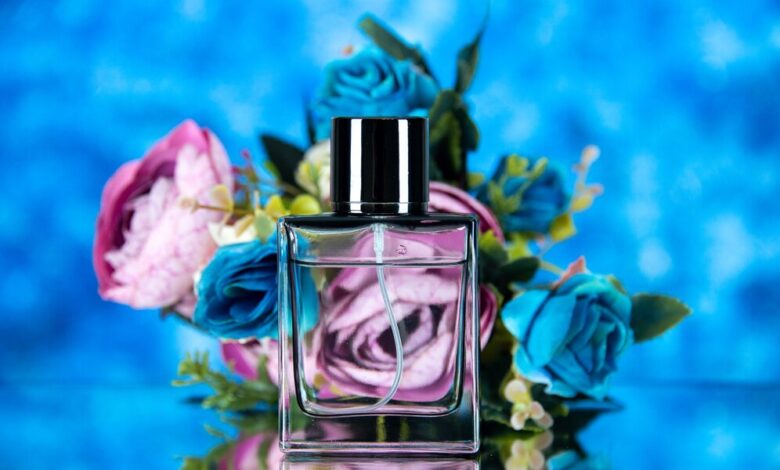The Essence of Parfû: Exploring the World of Fragrance

Fragrance is an critical a part of human way of life and history, weaving via our senses and influencing our emotions in profound approaches. Among the myriad of scents that surround us, “parfû” stands proud as a term deeply rooted within the artwork of perfumery. While “parfû” might look like a variant spelling of “parfum” (French for fragrance), it represents the wealthy and numerous global of fragrance that captivates humans globally. In this text, we are able to delve into the nuances of parfû, exploring its records, importance, and the intricate artwork of fragrance introduction.
The Historical Evolution of Perfume
Perfume has a history that stretches lower back thousands of years, with proof of its use in historical civilizations such as Egypt, Mesopotamia, and China. The word “fragrance” itself comes from the Latin “in line with fumum,” meaning “through smoke,” reflecting the early strategies of scenting the use of burning resins and incense.
In historical Egypt, perfume changed into a symbol of both non secular and every day life. It changed into utilized in religious ceremonies, at some stage in mummification, and as a luxury item for the elite. The Egyptians pioneered the art of distillation, laying the basis for cutting-edge perfumery.
The Greeks and Romans endured the culture of fragrance, adding their improvements. The Greeks added the idea of private fragrance, using it to decorate social popularity, while the Romans subtle the exercise, incorporating perfumes into their baths and ordinary routines. By the Middle Ages, fragrance had spread thru Europe, inspired by way of the Arab global’s advancements in distillation and chemistry.
The Renaissance marked a enormous turning factor in the history of perfume, with the emergence of modern-day perfumery. Italy became a hub for fragrance improvement, with exceptional figures along with Catherine de’ Medici selling the use of perfume in the French court. The art of perfume-making continued to adapt, with improvements in both the science and artistry of creating scents.
The Science of Fragrance
At its center, fragrance is a blend of aromatic compounds designed to create a pleasing fragrance. These compounds fall into 3 important categories: essential oils, artificial fragrances, and herbal extracts.
- Essential Oils: These are focused plant extracts obtained thru techniques like steam distillation or bloodless urgent. Essential oils capture the authentic essence of a plant’s perfume and are often used because the base for plenty perfumes. For instance, lavender oil, rose oil, and sandalwood oil are usually used in perfumery.
- Synthetic Fragrances: In the early 20th century, the improvement of synthetic compounds revolutionized perfumery. Synthetic fragrances allow perfumers to create unique and complicated scents that aren’t viable with natural components by myself. Molecules like vanillin (a synthetic by-product of vanilla) and limonene (a citrus scent) are examples of such compounds.
- Natural Extracts: These encompass resins, balsams, and animal-derived materials which includes ambergris and musk. Although much less generally used nowadays due to moral and environmental concerns, herbal extracts nonetheless play a role in some excessive-end perfumes.
The advent of a perfume includes blending these additives in precise proportions to gain the preferred fragrance profile. Perfumes are usually established into three layers:
- Top Notes: These are the preliminary scents perceived upon software, frequently sparkling and mild. They include citrus, herbs, and a few fruits.
- Middle Notes (Heart Notes): These scents emerge after the top notes fade and shape the core of the fragrance. They are regularly floral, spicy, or fruity.
- Base Notes: These are the very last, lasting scents that linger after the perfume has dried down. They consist of wealthy, deep notes like vanilla, musk, and sandalwood.
The interaction of these notes creates the overall fragrance experience, which can be both fleeting and profound.
The Artistry of Perfume Creation

Creating a perfume is as a great deal an artwork as it’s far a technological know-how. Perfumers, or “noses” as they’re regularly called, are surprisingly skilled experts who mixture components to create harmonious and fascinating fragrances. The method includes not handiest a deep understanding of chemistry but additionally a polished experience of smell and creativity.
Perfumers regularly begin with a concept or notion, which may be a selected heady scent reminiscence, a subject matter, or even an emotion. From there, they experiment with specific combinations of ingredients to achieve the desired effect. This iterative manner can contain masses of iterations before the final components is perfected.
One of the important thing components of fragrance introduction is the stability among the various notes. A well-crafted perfume will have a clean transition among the top, middle, and base notes, creating a cohesive and evolving scent experience.
The art of perfumery also involves knowledge the cultural and emotional components of perfume. Different cultures have wonderful choices and institutions with positive scents. For example, jasmine and sandalwood are exceedingly valued in Indian perfumery, at the same time as lavender and rose are outstanding in Western fragrances.
The Role of Perfume in Modern Culture
In modern-day society, perfume continues to play a huge position in non-public expression and cultural identity. It is used to decorate one’s presence, evoke memories, and speak individuality. The perfume industry is a major international market, with limitless manufacturers imparting a wide range of merchandise to suit each choice and occasion.
Perfume is also intertwined with the style industry, with many designers launching their personal fragrance traces. These perfumes often mirror the emblem’s identification and aesthetic, adding every other measurement to their fashion collections.
Additionally, perfume is a popular gift object, symbolizing thoughtfulness and care. The act of selecting a perfume for someone else is a private gesture that reflects the giver’s understanding of the recipient’s tastes and options.
The Future of Perfume
As we circulate into the destiny, the arena of perfume is poised for exciting tendencies. Advances in generation are enabling new techniques of heady scent advent and customization. For instance, virtual reality and synthetic intelligence are being explored to create customized perfume stories.
Sustainability is also turning into a key cognizance in the perfume enterprise. There is a growing call for for green practices, inclusive of using herbal and responsibly sourced ingredients, in addition to lowering waste in production.
Moreover, the intersection of technological know-how and artwork will preserve to pressure innovation in fragrance. The exploration of recent substances and technologies guarantees to amplify the boundaries of what’s possible in perfumery, providing purchasers even extra diverse and particular scent experiences.
Conclusion
Parfû, or fragrance, is a fascinating and multifaceted element of human tradition. Its history spans millennia, from historic rituals to modern luxury. The artwork and science of fragrance creation contain a sensitive balance of ingredients, creativity, and cultural sensitivity. As we look to the destiny, the arena of fragrance will absolutely preserve to conform, reflecting our ever-changing tastes and values. Whether it is thru the charm of a conventional fragrance or the innovation of a brand new perfume, parfû stays a effective medium for expression and emotion, enriching our lives with its beauty and complexity.
4o mini



